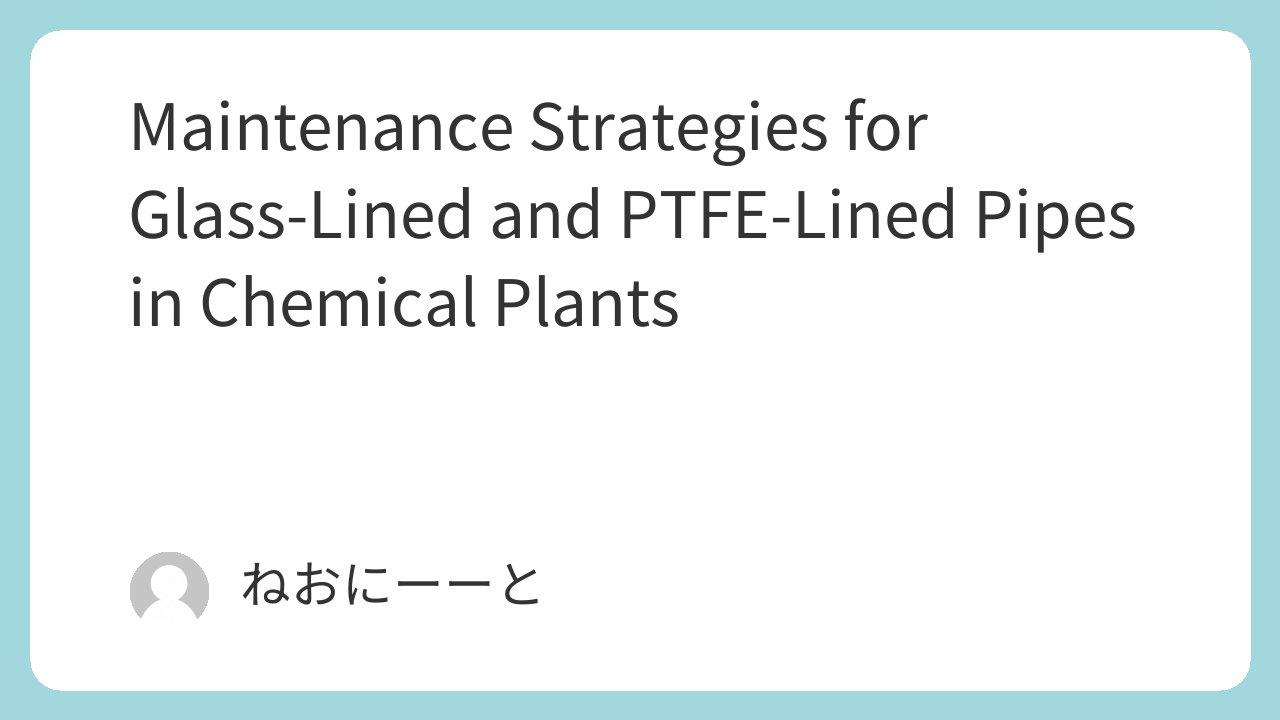Glass-lined and PTFE-lined (fluoropolymer-lined) pipes are widely used in chemical plants that handle highly corrosive substances. With aging infrastructure becoming a serious concern, the importance of maintaining these critical pipelines continues to grow.
While plant equipment maintenance often receives attention, piping systems are sometimes overlooked. This article provides a practical overview of maintenance strategies for glass-lined and PTFE-lined pipes, focusing on real-world approaches rather than idealized theories.
Breakdown Maintenance (BM) as the Default Approach
For most glass-lined and PTFE-lined pipes, breakdown maintenance (BM) is the realistic option—replacement only after damage or leakage is detected. While BM works for small systems with limited piping, applying time-based (TBM) or condition-based (CBM) maintenance across an entire plant network is often impractical.
Limited Use of Time-Based Maintenance (TBM)
There are cases where TBM is justified, such as lines carrying highly corrosive or hazardous chemicals. In those rare situations, operators may:
- Remove sample sections annually for inspection.
- Discuss risks with stakeholders to decide on continued use.
- Set a replacement cycle based on when the first failure occurs.
However, TBM for pipelines remains exceptional and often requires trial-and-error.
Grading Pipes by Condition
Glass-lined pipes can be classified by surface condition:
- Grade A: New (usable anywhere).
- Grade B: Slightly dulled surface (usable in less critical lines).
- Grade C: Noticeably rough (unacceptable for high-risk TBM lines, but may be reassigned to less demanding service).
This ranking system helps extend pipe usage, but applying it across an entire plant can be overwhelming. In practice, inspections are usually limited to accessible areas such as pump headers or exposed piping.
Early Detection Practices
Even when using BM, early detection of failure signs is valuable. Some practical methods include:
- Check flange bolts: Discoloration or rust progressing faster than on nearby lines may indicate leaks.
- Inspect flanges: Look for signs of liquid seepage, especially on TBM-managed lines where immediate replacement must be possible.
- Install flange covers: Acrylic covers can turn opaque when exposed to leaked gas, serving as an early-warning signal.
- Use external detection plugs: Some PTFE-lined pipes include plugs in the outer steel layer for spotting leaks early.
Reducing the Number of Pipe Sections
Flanges are weak points, and glass-lined/PTFE-lined piping systems often have many. Reducing the number of pieces during redesign or maintenance improves reliability. Although construction drawings often result in excessive flange connections, it’s important to revise layouts during operation phases to minimize unnecessary joints.
Conclusion
Maintaining glass-lined and PTFE-lined pipes requires a balance between practicality and safety. While BM remains the standard, TBM may be justified for highly corrosive services. Grading pipes by condition, focusing inspections on accessible areas, and applying simple detection tools can greatly improve early failure identification. Above all, reducing unnecessary flanges and pipe sections ensures more reliable long-term operation.

Comments